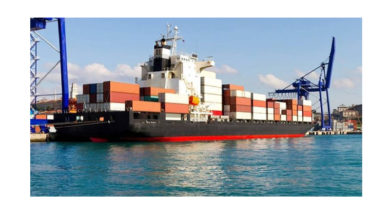What’s so Attractive About LFP?

Why LFP is so attractive for printers from all walks of life? For one thing, large format printing offers enormous opportunities for marketing purposes. It offers your imagination the opportunity to run wild. It can be used to produce billboards, posters, fleet graphics, and so on. It can be used to create breathtaking interior decoration, garment designs and endless other applications. Benefitting from possibilities that digital printing offers wide format printers can deliver customized prints for almost all kinds of printing demands. They offer highest degree of quality, and the investment required to put the technology in to good use doesn’t cost an arm and a leg. Recently, commercial offset printers, who are desperately looking to diversify, are considering LFP as a viable option that will bring them more revenue and cash.
Points to ponder before jumping on the LFP bandwagon
 InfoTrends reports that the retail value of digital wide format print will exceed US$20 billion by 2015. This means a growth rate of more than 7.5%. These figures are attractive enough for any printer who wants to get a piece of the LFP action. However if you are a commercial printer and you are seriously considering wide format printing as a gateway to more profitability, first you should be dead certain about what you are going to do with it. There are a myriad of things you can do. First you have to choose between flatbed, roll to roll or a combo printer. Then you have to determine what sort of printed products you want to offer to your customers. Sky is the limit here. From billboard to wallpaper, garment, cushions, there are thousands of applications you can choose from. The next step would be to find ways to develop and offer more variety of printed products.
InfoTrends reports that the retail value of digital wide format print will exceed US$20 billion by 2015. This means a growth rate of more than 7.5%. These figures are attractive enough for any printer who wants to get a piece of the LFP action. However if you are a commercial printer and you are seriously considering wide format printing as a gateway to more profitability, first you should be dead certain about what you are going to do with it. There are a myriad of things you can do. First you have to choose between flatbed, roll to roll or a combo printer. Then you have to determine what sort of printed products you want to offer to your customers. Sky is the limit here. From billboard to wallpaper, garment, cushions, there are thousands of applications you can choose from. The next step would be to find ways to develop and offer more variety of printed products.
A thorough knowledge of printing inks and available substrates is essential for a successful wide format printing operation. Marketing for wide format printing is totally different. Thus your approach must also be different.
When we talk about a typical wide format printing job even printing one poster should be profitable. For a typical commercial printer this concept is far- fetched and more of a science fiction than reality.
A successful printer must have the resources and ability to be able to attract a wide spectrum of customers. A traditional commercial offset printer normally deals with limited and long term customers, who normally are faithful to their printers. These customers don’t tend to blow the good relationship with their printers for a few dirham more or less. However within wide format printing market the relationship revolves around price, quality and delivery time.
And yes a few dirham more or less is very crucial in attracting new customers or losing the old ones.
Prevailing trends in wide format printing industry
There are two prevailing trends in wide format printing industry as far as technology is concerned. The first is LED or light emitting diodes. Wide format printers traditionally are equipped with UV arc lamps for the curing operation.
However manufacturers of wide format printers are now warming up to LED technology. LEDs use at least 75 per cent less energy than traditional incandescent and fluorescent lights and last 25 times longer. Like any other technology, LEDs have drawbacks, which explain why the technology didn’t take the world by storm yet.
 The most significant limitation of LEDs is ironically its key strength, namely the narrow emission spectrum. Even small amount of heat trapped inside the LED’s electronics can cause the devices to fail if not adequately dissipated.
The most significant limitation of LEDs is ironically its key strength, namely the narrow emission spectrum. Even small amount of heat trapped inside the LED’s electronics can cause the devices to fail if not adequately dissipated.
Nevertheless many companies are now using LED technology for curing purposes. For example, EFI claims its new LED “Cool Cure” curing for its VUTEk line operates at the same speed as UV lamps but with decreased power consumption, and has the ability to print on thinner, less expensive substrates due to reduced heat, and less cost due to no bulb replacements.
EFI, one of the biggest manufacturers of wide format printers, during SGIA exhibition introduced VUTEk GS3250LX, a hybrid flatbed/roll-to-roll printer that can handle flexible or rigid substrates up to 3.2 meters wide and up to 2 inches 5.08 mm thick.
Fujifilm also recently launched a new LED based printer. The Acuity LED 1600 is designed for printer’s who are new to wide format inkjet printing or for users who wish to save costs by printing with the newest LED-UV curing technology.
The Acuity LED 1600 is a high-performance wide-format inkjet printer featuring a proprietary-design LED light source, high precision, high-speed printheads, and optimized fast curing UV-LED ink. Agfa introduced LED technology in 2010 with Anapurna 2500 LED wide format printer. Others including Mimaki also are embracing this technology.
The second technological advancement that is becoming popular is grayscale printhead technology. There has always been a trade- off between speed and quality in wide (grand) format printing. The faster you print the more you compromise on the quality. The grayscale printhead technology, which was introduced few years ago, promises to solve this problem. The technology is relatively new and its success is still a subject of debate. Grayscale printheads are able to jet several small droplets through their small nozzles with high frequency to obtain density. Before hitting the media, droplets join together to form a large droplet. However this method of achieving density ultimately leads to less speed and reduced quality. Grayscale works in 3 modes: Small droplets (up to 12 picolitre), large droplets (up to 36 picolitre) and full grayscale droplets in which big and small size droplets are jetted simultaneously. Matan (www.matanprinters.com),a major manufacturer of grand format printers has come up with a new technology, which revolves around grayscale printheads, called Parallel Drop Size (PDS). Matan claims that by using this technology it is possible to achieve high definition print quality, while still maintaining high production printing speeds. The smart software algorithm instructs the printheads to simultaneously inject small 20 pl (picoliter) droplets together with larger 40 pl drops. According to Matan, the innovation is that you are no longer dependant on the printhead’s firing frequency. Small droplets create fine details, while the larger drops achieve ink density. Only time will tell if this technology is truly revolutionary or just a marketing stunt.
When it comes to wide format printing technology HP occupies a prominent place. The company has a broad range of wide format printers including the entry-level HP Scitex FB500 and FB700series and the high-end HP Scitex FB7600 flatbed printers and HP Scitex TJ8600 industrial press.
It’s about ink
Major developments that enhanced flatbed printers over the years include advancement in printheads (design and technology wise), progress in ink technology and improved substrate movement through printheads.
Inks had a major role to play in the development of flatbed printer market. The flexible nature of new generation inks made it possible to print on various substrates and thereby eliminating the need to stock different grades of inks, which would have otherwise increased the cost of production and decreased total productivity.
 Most often, primers or other forms of fixtures are applied over the ink to improve its longevity and sheen. But not all substrates absorb the ink easily and give the desired result. UV inks come handy here because as compared to traditional inks they dry up easily through exposure to ultraviolet lights. Most of the flatbed printers available in the market today are UV based and has significant advantages over solvent based printers due to its capability to print on a broad range of materials, its eco friendly nature and quick drying feature.
Most often, primers or other forms of fixtures are applied over the ink to improve its longevity and sheen. But not all substrates absorb the ink easily and give the desired result. UV inks come handy here because as compared to traditional inks they dry up easily through exposure to ultraviolet lights. Most of the flatbed printers available in the market today are UV based and has significant advantages over solvent based printers due to its capability to print on a broad range of materials, its eco friendly nature and quick drying feature.
Inks can be generally categorized into three. Water based or aqueous inks are considered to be environment friendly as they emit less VOC’s (Volatile Organic Compounds) during the print process. With the addition of Latex inks, aqueous inks now claim to have the same durability of solvent inks.
Solvent or eco-solvent inks ruled the market before the emergence of water based and UV inks. These are oil or alcohol based inks and is considered to be not eco-friendly as they emit a lot of harmful fumes during the process. UV curable inks are the third category, wherein the inks are cured or are dried by exposure to ultraviolet lights. UV curable inks have many advantages over solvent inks. It supports the possibility to use different varieties of substrates on the printer. They are resistant to heat and other external factors and thus reduces the chance of fading due to exposure. It also eliminates the need for additional labour, as all post and pre processing works are not necessary when using UV curable inks. Apart from that, as they have easy absorption rates, they dry up easily and therefore don’t clog the print heads. UV printers are emerging as a hit in developed countries and nowadays many printers are shifting their focus from solvent to UV.
A major advantage of latex inks is that they can be easily replaced in solvent printers by cleaning and changing the print heads. A developing technology, latex or durable aqueous inks has the potential to overtake solvent inks and slowdown the growth of UV inks.
According to InfoTrends, HP is the market leader in selling latex based machines and has so far sold thousands of latex printers. The other leading names in aqueous inkjet market are Canon and Epson. Roland DG has a dominating position in eco-solvent and holds 41.9% market share globally. Mimaki and Mutoh follow the company by coming second and third.
Océ leads the UV printing space, and is followed by Mimaki, HP and EFI. UV printers are considered to be durable and convenient, as they can print on any rigid substrate, which is up to 2 inches thick.
Exciting opportunities
Large format printing sector offers exciting opportunities to printers all over the world. But like any other printing process and technology, wide format printing is not about printing but it’s a way to offer products to people who are willing to pay for it. Finishing side of the operation is as important as the printing stage. And then there is the question of speed versus quality. So if you are feeling prepared to jump on the LFP bandwagon you better have a clear vision and a good dose of imagination. If you do, you’ll soon find out that the rewards are just staggering.





62 Comments